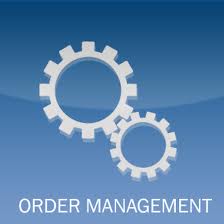Charlie has spent over six years in eCommerce having worked initially in the wholesale sector. With the sort of knowledge he gained through working in Wholesale he was well capable of starting up a number of eCommerce businesses for his friends and family and also for himself. He now works for Linnworks which is a multichannel automation software package so he still works with online sellers every day and he still runs his own eCommerce businesses. He’s learned quite a few lessons over the years.
Here are some of those lessons.
1. ‘More Time Spent, Less Money Made’
Online sellers have the potential to be the real entrepreneurs of the future, the only thing required – is to start an internet company. They want to make money, are hungry for it, and they want to run their business in a smart way. Charlie says, he “watched as the old guard that refused to embrace online selling were slowly swept away with the recession”.
Charlie notes that the smartest sellers always list everything the supplier has in stock.These smart sellers will request a ‘Live/Active’ stock list on a daily basis and list everything Charlie held. They were the ones who made the most sales and were always able to meet the Minimum Order Quantities (MOQ) that were required – resulting in the cheaper rates offered to buyers for purchasing more at once.
These Drop Ship Strategies are particularly smart says Charlie
There are the sellers who ‘Work Smarter not Harder’ and while Charlie’s business picked, packed and despatched all of their orders for them, those innovative sellers were out playing golf – and living off their margins.
2. Make yourself known and phone for the best dealIf you’re one of those people who simply email for discounts, you’re more than likely going to receive an automated response copied from a Microsoft Word document.
On the other hand, if you strive to make yourself a ‘known customer’ and you’re able to make a good deal, approach your supplier with a decent proposition. Charlie says, “Don’t ask for a discount without making the sales, and definitely don’t ask via email!”
Remember it is human nature for people to hate saying no – but it’s much easier to say no on an email than it is to do it over the phone. Charlie acknowledges that, “Dealing with someone by email is impersonal, and a refusal carries less weight emotionally” so put on your big boy or girl pants and get in touch personally.
3. Manage your stock
When you’re selling across a number of different marketplaces it is easy to forget the mantra that is: ‘More Time Spent, Less Money Made’. The thing is keeping track of your inventory becomes increasingly difficult the more stock you have and the more marketplaces you sell on. Charlie was working not just with eBay and Amazon but also Allegro and Mercado livre. He notes that his “inability to keep stock of what we were selling made us prone to expensive mistakes”.
Charlie and his business came across an order management system (one he would later work for) that allowed the Sales and Marketing team to really concentrate on their role. The order management system allowed Charlie to centralise both stock and orders in one place, with orders automatically deducted from the correct stock figure from the relevant SKU.
This further allowed Charlie and his company to improve their listing optimisation by localising listings for international buyers and go on to sell products directly to B2B clients, including large European and American corporations.
4. Key factors in Charlie’s success:
If you can sell B2C, why not sell B2B?
He started to contact businesses directly and began to sell to B2B customers in bulk, moving those sales away from the Online Marketplaces.
Of course as more sales came in, you gain in confidence and are more willing to approach other larger companies.
Sell internationally
Translate your listings and sell online internationally. Let’s face it the UK has a population of around 63 million, yet Germany has a population of nearly 82 million, France 65 million, Italy 60 million and Spain 47 million. That’s just the tip of the iceberg. Just by selling in those countries you will quadruple your target audience. And then if you go on to target US, Brazil, Canada and Japan imagine what that will do for your sales!
Look at your order management system
Charlie says, when “keeping up to date with accurate stock levels and changing them on your accounts becomes a full time job … Don’t let it bog you down, use software to do that for you.”
Optimize your search termsTailor each individual listing so that it is targeted with a particular title, brand or style – this effectively allows you to target more keywords. Charlie gives a great shoelace example as follows:
Example 1. White sport shoe laces for Nike trainers
Example 2. White sport shoe laces for Adidas trainers
Bring repeat customers back to your site
If you can convert customers to move from the marketplace to your own website you’re onto a good thing. Charlie says, “Direct sales have so many benefits, they are easier to manage and the amount of money you save from not having to pay marketplace fees makes the cost of maintaining your own site worthwhile”.
Charlie utilised the customer information from online sales, and then created email marketing campaigns that explained clearly to the customer the benefits they would receive by purchasing from his site directly. Build on their trust. They will need coaxing because they perceive those marketplaces to be ‘protected’.
Virtual FootfallYour primary focus should be eBay and Amazon because you want the ‘virtual footfall’. Charlie recommends that you “focus on them, expand internationally, and then look into investing on your own site and other bespoke marketplaces”.
Over to you
Have you tried any software to help you manage your stock? What tips do you have? Get in touch with us below or join in the conversation on Facebook.
 Wholesale
Wholesale 




Comments are closed.